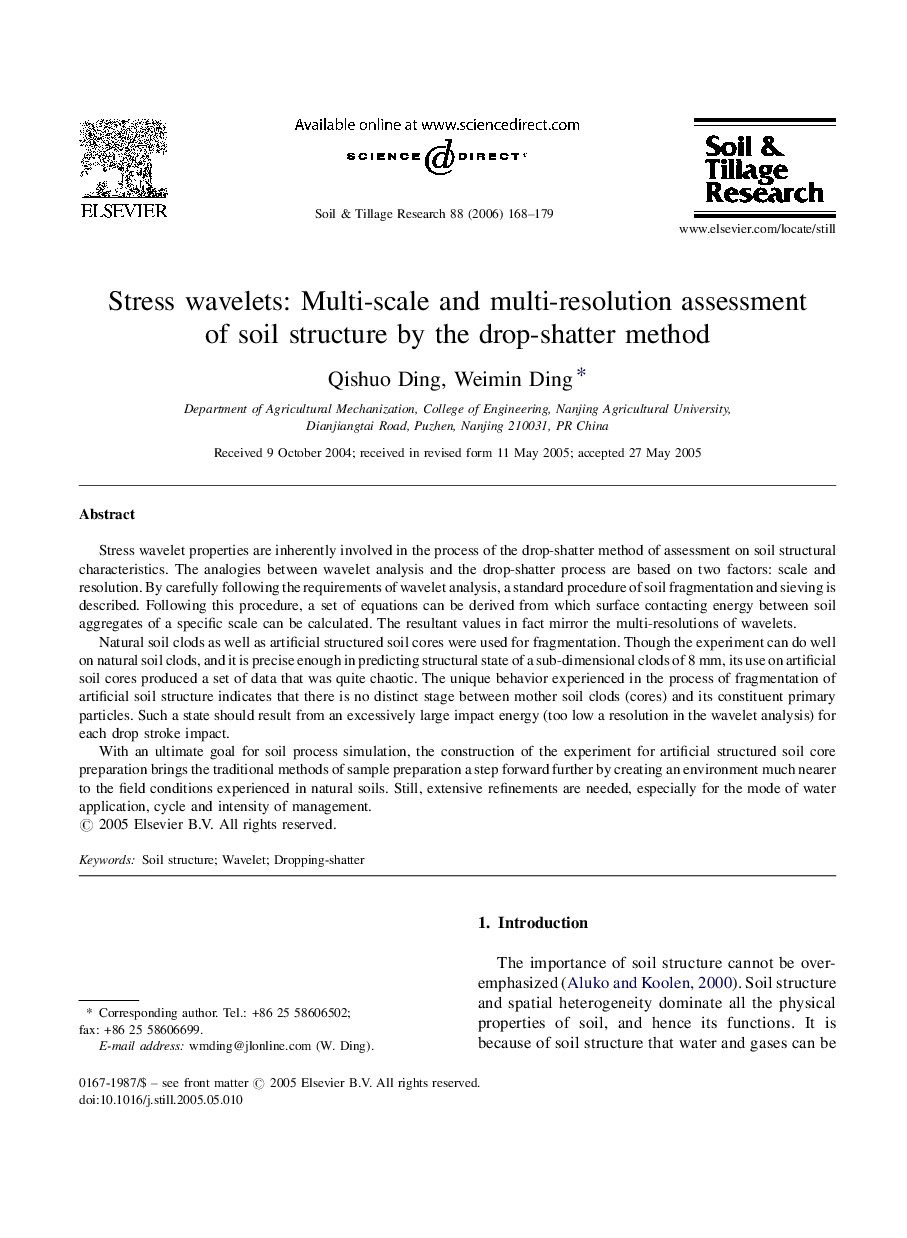| Article ID | Journal | Published Year | Pages | File Type |
|---|---|---|---|---|
| 306960 | Soil and Tillage Research | 2006 | 12 Pages |
Stress wavelet properties are inherently involved in the process of the drop-shatter method of assessment on soil structural characteristics. The analogies between wavelet analysis and the drop-shatter process are based on two factors: scale and resolution. By carefully following the requirements of wavelet analysis, a standard procedure of soil fragmentation and sieving is described. Following this procedure, a set of equations can be derived from which surface contacting energy between soil aggregates of a specific scale can be calculated. The resultant values in fact mirror the multi-resolutions of wavelets.Natural soil clods as well as artificial structured soil cores were used for fragmentation. Though the experiment can do well on natural soil clods, and it is precise enough in predicting structural state of a sub-dimensional clods of 8 mm, its use on artificial soil cores produced a set of data that was quite chaotic. The unique behavior experienced in the process of fragmentation of artificial soil structure indicates that there is no distinct stage between mother soil clods (cores) and its constituent primary particles. Such a state should result from an excessively large impact energy (too low a resolution in the wavelet analysis) for each drop stroke impact.With an ultimate goal for soil process simulation, the construction of the experiment for artificial structured soil core preparation brings the traditional methods of sample preparation a step forward further by creating an environment much nearer to the field conditions experienced in natural soils. Still, extensive refinements are needed, especially for the mode of water application, cycle and intensity of management.
